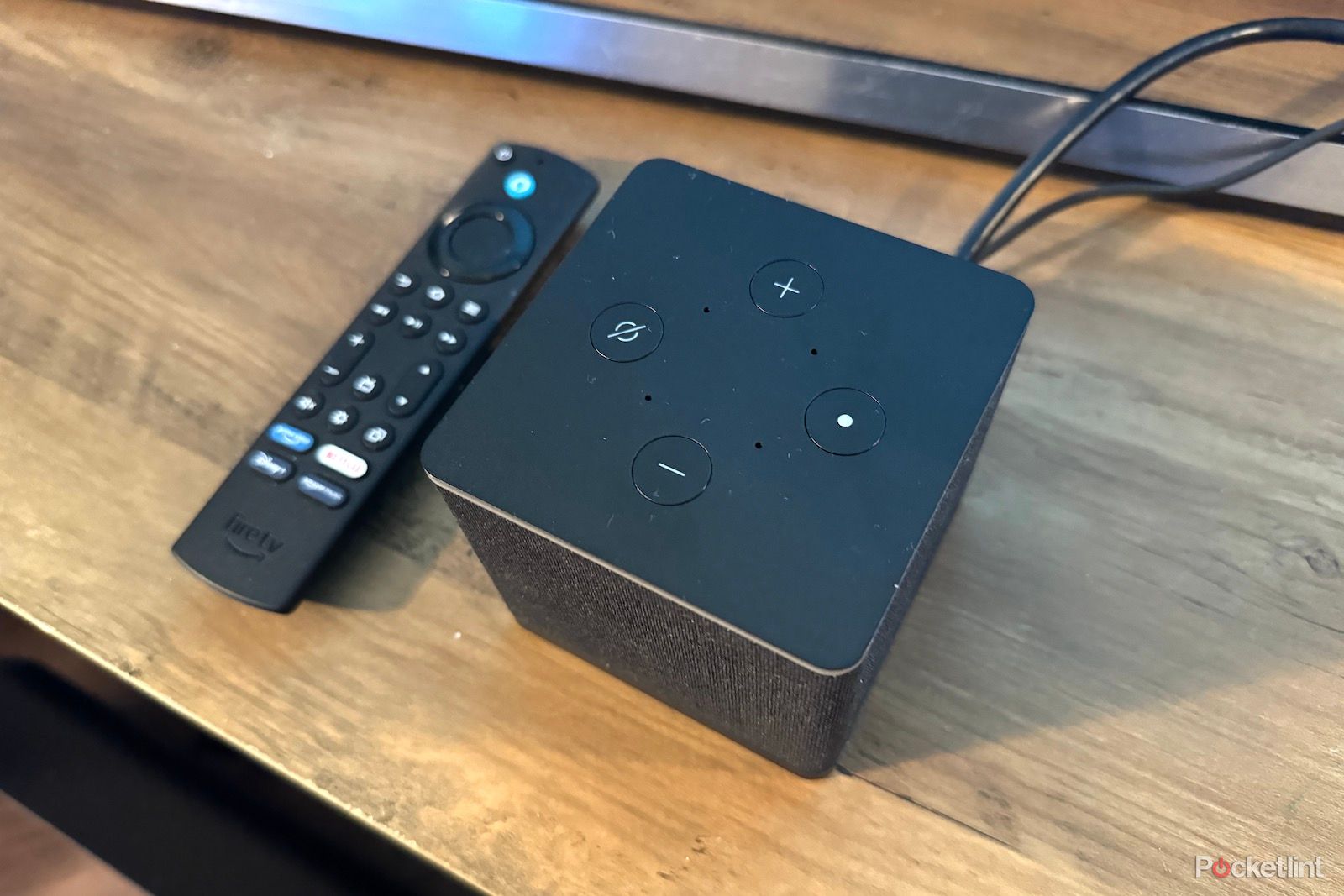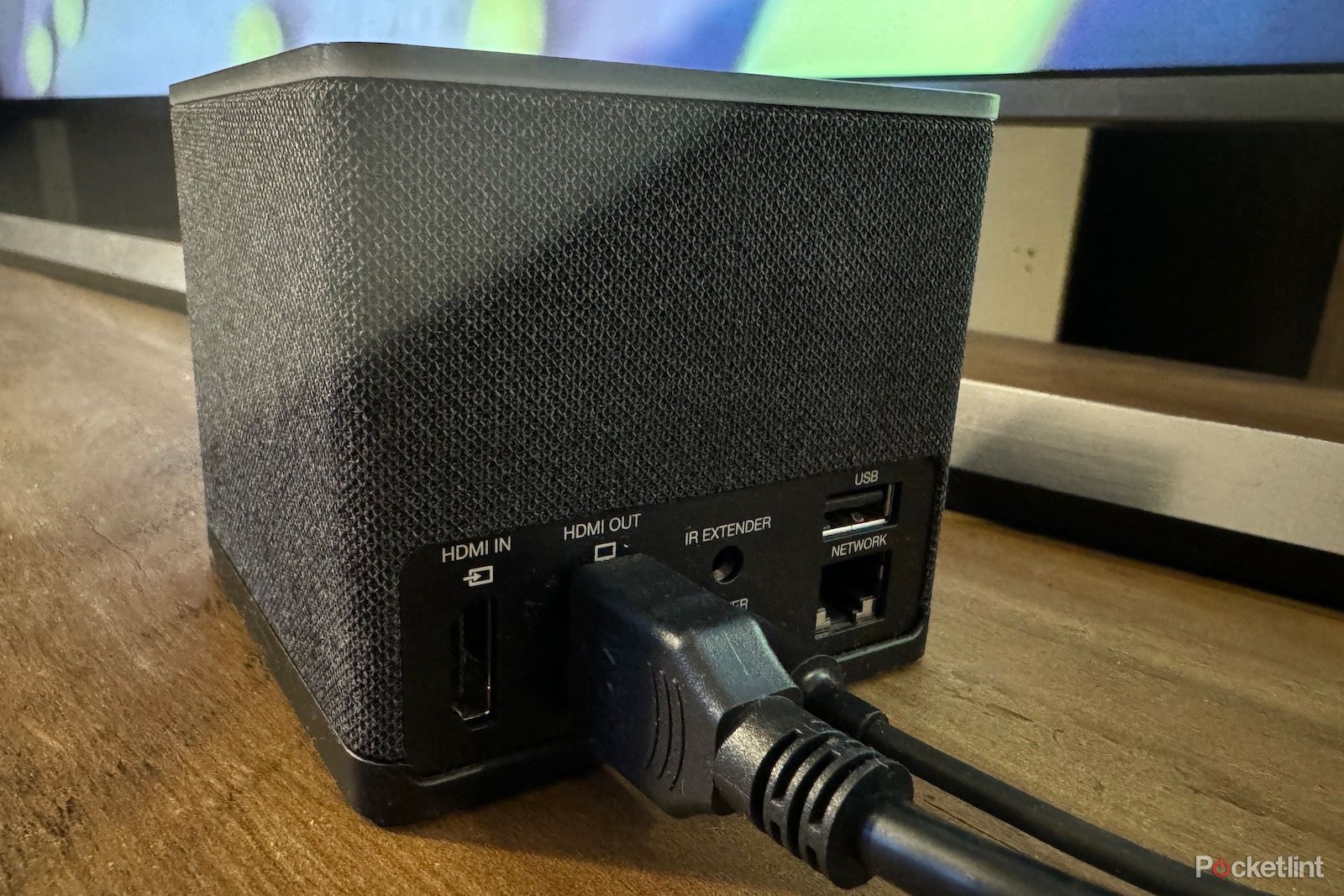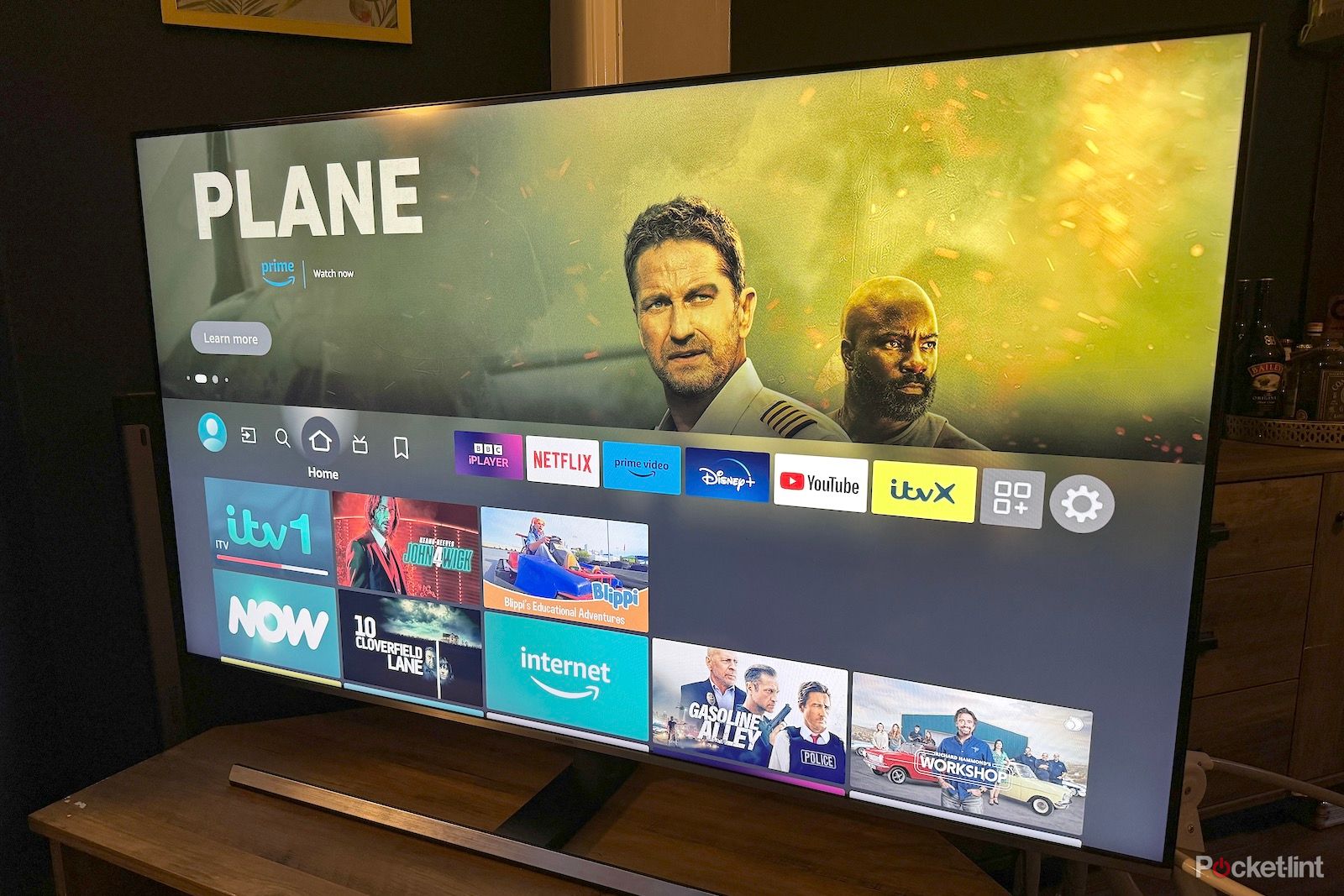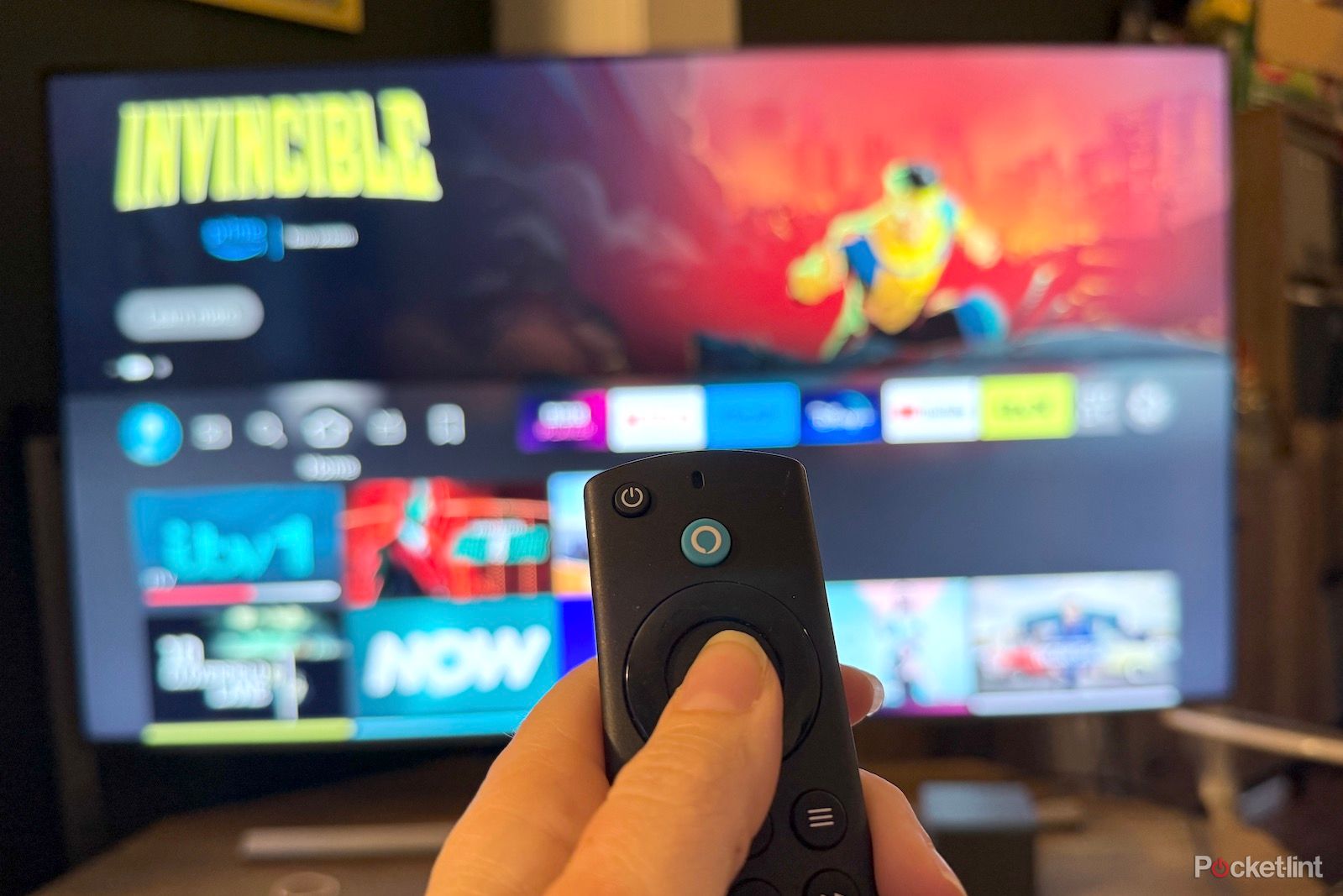Despite a refreshed Amazon Fire Stick line up just recently, the Fire TV Cube is still the top dog of Amazon’s streaming line up. Now in its third generation, it brings some improvements such as a faster processor and better connectivity, while sticking to its original MO of being a Fire TV Stick and Echo speaker in one.
That means hands-free Alexa and all that Alexa offers is just a voice command away, alongside 4K HDR streaming from pretty much all of your favourite streaming services. It doesn’t come cheap though, and at double the price of the Max, does it make sense to invest in the little box of tricks? Keep reading to find out.
Amazon Fire TV Cube (3rd Gen)
The Fire TV Cube is the most powerful in Amazon’s streaming devices line up. It’s faster than it was before, offers improved connectivity, and the hands-free Alexa experience is solid – one of the main reasons to pick it up over Amazon’s other streamers. It is expensive though, and there feel like a few missed opportunities to make it the very best it could be.
- Good picture performance
- Speedy performance
- Hands-free Alexa works well
- Improved connectivity
- Better design
- Expensive
- Interface still heavily Amazon focused
- 60Hz passthrough feels like a missed opportunity
Specs, pricing and availability
The Fire TV Cube (3rd Gen) was announced on 28 September 2022 for a 25 October 2022 release, and it replaced the previous version so it is no longer available. The Fire TV Cube costs $139.99/£139.99, compared with the Fire TV Stick 4K Max at $69.99/£69.99 and the standard Fire TV Stick 4K costing $59.99/£59.99, though it’s worth all of these will see sales at various points of the year – particularly on Prime Day and Black Friday.
Its biggest competition is going to be the Apple TV 4K, which costs $149/£169 with ethernet – something the Fire TV Cube has as standard. However, you get a whole lot more storage with Apple, at 128GB versus 16GB. Something to think about if you fancy doubling up your streaming box as a casual games machine too, but more on that in a little bit.
Amazon Fire TV Cube (3rd Gen)
- Dimensions
- 86 x 86 x 77mm
- What’s Included
- Power cable, Fire remote
- Wi-Fi
- Wi-Fi 6E Tri-band. Also supports 802.11a/b/g/n/ac/ax
- Ethernet
- Yes
- Supported video
- Dolby Vision, plus HDR, HDR10, HDR10+, HLG
- Supported audio
- Dolby Atmos, 7.1 surround sound, 2-channel stereo and HDMI audio pass-through up to 5.1
- Storage and RAM
- !6GB, 2GB RAM
- Connections
- 1 x HDMI 2.1 output, 1 x HDMI 2.1 input, 1 x USB-A input, IR extender, Ethernet port 10/100Mbps
Design and connectivity
While the size and shape of the Fire TV Cube are pretty much identical to the previous generation, there has been a slight design change in finish – with a move from glossy plastic to fabric wrapped around its midsection.
This helps to keep it looking a little smarter and less prone to fingerprints and dust, while also bringing it more into line with Amazon’s Echo speakers too.
On top, there’s a plastic section that holds basic controls – volume up and down, an Alexa action button and a physical mute button for when you want a bit of privacy. There’s also a remote included in the box, the standard Alexa version, though it will work with the optional Pro version too.
If I’m being picky, I’d have liked to have seen the beefed up remote included here. It feels like a no brainer to, to offer the ultimate Fire TV experience. However as it stands, you’ll need to pay an extra $34.99/£34.99 for it, which pushes the price up to a pretty high one indeed.
The remote in the box is perfectly functional though, with all the controls you could want including shortcuts to popular apps. It uses a Bluetooth connection to the Fire TV Cube, so that it doesn’t need line of sight to operate, though still has IR on board to be able to control your TV when needed.
While the Alexa button is on the remote, you don’t need it to access Alexa at all. Simply say your command out loud and Alexa will jump into action, thanks to the built-in four-mic array. A small LED strip along the front lights up blue when you do to acknowledge your request – your TV doesn’t even have to be on.
Around the back, there are some changes with connectivity, which does open up the usefulness of the Fire TV Cube further. Alongside the HDMI 2.1 output (it’s worth noting there’s no HDMI cable in the box, so add one to your basket at the same time) and port for an IR repeater, there is now a more useful standard-sized USB port, and an ethernet connection for hardwiring.
There is also an HDMI 2.1 input which allows you to connect a set-top box, Blu-ray player or console through the Cube, and have access to the Alexa overlay when using it and some amount of Alexa control too. Just be aware that the port is limited to 4K/60Hz, so isn’t capable of 120Hz playback nor VRR, and so won’t be the best for a PS5 or Xbox Series X/S, which feels like a bit of a missed opportunity.
The last connectivity upgrade here is something you can’t see – it’s the inclusion of Wi-Fi 6E, upgrading from Wi-Fi 6 found in the Fire TV Cube’s last generation. You’ll have to have a 6E-compatible router to access it, but if you do, you should get smoother streaming in even the busiest household of connected devices.
Features
As Amazon’s top streaming device, the Fire TV Cube is as powerful as you’d hope it would be, with a 2.0GHz octa-core processor and 2GB RAM that keeps everything running smoothly during testing.
It’s twice as powerful as the quad-core processor in the Fire TV Stick 4K Max – a claim Amazon is sticking to even after the new Sticks have been released.
Just as before, the Cube is capable of 4K streaming with support for all the HDR formats, including HDR10+ and Dolby Vision, plus support for passing through Dolby Atmos content too.
There’s a Super Resolution feature on board here, which aims to upscale any 720p or 1080p content you might be watching, up to 4K. However, the likelihood is your TV’s built-in upscaling may well do a better job of this, particularly those with more sophisticated AI-based upscaling, but if you have a very affordable or slightly older 4K TV, it’s worth a try to see the difference.
You’ll get 16GB of on-board storage, which isn’t a lot compared with the competition (but is double that on the Fire TV Stick 4K Max). However, this won’t be an issue for most people considering you’ll be streaming the majority of content directly from the cloud.
If you want to download a lot of apps and games from Amazon’s Appstore, though, you may find yourself coming up short. Thankfully the USB port does mean adding additional storage is now an option if you need.
It’s fair to say that Amazon’s Fire TV Cube is far from a powerful gaming machine – an Nvidia Shield or even Apple TV 4K will do a better job – but casual gamers may enjoy some of the game options available (and Amazon’s cloud-gaming platform Luna is also worth a look too).
Alexa voice control works well here, with the ability to turn your TV on or off, control playback, request content and switch HDMI inputs alongside all of your normal Alexa commands.
I have a Ring Video Doorbell Plus and it means I can see who is at my door on the big screen, control other smart home devices that I manage with Alexa, and use things like Alexa Calling – all via the Fire TV Cube.
It really is like having an Echo Dot built into your Fire TV streaming device, and it’s worked just as seamlessly as one during testing. Considering the issues we reported in our review of the previous generation, it seems that Amazon has done its bit to improve the performance of the microphones here, and I’ve had no issues with being left unheard – even when I’ve tried to catch it out.
Setup and interface
Getting the Fire TV Cube up and running is really straight forward, with the on-screen interface walking you through step-by-step to get your device onto your network and registered in your Amazon account. It’ll also try to understand what TV you have and any other kit you have connected to it – it’ll try to do that automatically (which it did for my Samsung TV), but if you have an older TV it may need a helping hand.
Adding your streaming service accounts is super easy too now, with QR codes that will enable you to approve your logins via your phone – much easier than lengthy typing on on-screen keyboards.
If you’ve used a Fire TV device before, the interface will be very familiar indeed. It is very heavily Amazon focused, as you might expect, which means you’ll see a lot of Prime and Freevee content in the banners for recommended content. In some ways, it’s no worse a culprit for this than Apple, but it’s something to bear in mind if you aren’t a Prime subscriber and have no interest in becoming one.
It will surface other content through other providers as recommendations but they feature less for sure. Still, it has most of the other apps you’d want, including Netflix, Disney+, Apple TV+, Paramount+, YouTube, plus all of the UK catch up apps.
In the States, HBO Max, Hulu and Peacock are all present and correct, while music streaming services like Spotify, Tidal, Deezer and TuneInRadio are available across the board – only Apple Music appears to be missing from the big players. There’s still no ability to cast from apps outside of Prime to the Fire TV Cube, or use AirPlay 2, which remains a bit of a shame.
You can select six favourite apps to pin to the top of your homescreen for easy access, and as you scroll down you’ll find various rails of content to help give you some inspiration. That serves up “next up” options from shows you’ve recently watched, as well as recently accessed apps and shows below that.
You’ll also get show and film recommendations by app or genre and a snapshot of shows currently playing on Live TV. You will spot some sponsored content and adverts as you scroll down too, and elsewhere in the interface in banners, which are perhaps overly present considering the price tag the Fire TV Cube carries. I don’t mind so much those that are relevant – shows I might like, for example – but straight up ads are a little more annoying.
Different users can set up their own profiles within Fire TV, for different histories and homepage setups. This is available under the user profile icon, which sits next to options for search, “Live” (which takes you to an EPG-style interface for TV shows on now), My Stuff (your saved Prime playlists) and source, for switching between connected devices.
Performance
In use, the Fire TV Cube performs exactly how I’d hope. Apart from one issue where the homepage didn’t seem to load properly on start up, and required a reboot, I’ve had no issues in term of navigating the interface, buffering time or freezing.
It’s definitely faster than the 2nd Generation Cube – I’m not sure it’s upgrade worthy but there’s a speed improvement all the same.
Pictures looks great, particularly with 4K footage. John Wick 4 looks outstanding in HDR10+, as does Stranger Things in Dolby Vision – the Fire TV Cube does its part at passing over sharp and detailed images to the TV, with punchy colours and very minimal noise – only occasionally noticeable in some darker scenes.
Even HD films streamed from Netflix looked almost as sharp and nuanced. The only pictures that don’t fare so well is standard-def TV, which looks decidedly more fuzzy and lacking in detail than watching it directly from my Sky Q box in the same resolution.
Verdict
The Fire TV Cube is a powerful streaming device that does its part to sit pretty atop Amazon’s streaming devices line up. It’s faster than it was before, offers improved connectivity (even if the 60Hz passthrough feels like a missed opportunity) and the hands-free Alexa experience is solid – one of the main reasons to pick it up over Amazon’s other streamers, and indeed, some of the competition.
Fire TV is still – surprise, surprise – very heavily geared towards surfacing Amazon content first and foremost, which is fine if you’re a Prime user but not so much if you aren’t. In fact, I’d go so far to say that if you aren’t, you should look elsewhere or consider becoming one.
The sticking point remains the price. If you can pick it up during a sale, all the better, but the fact is that the many people will be quite happy with the performance and features offered by the Fire TV Stick 4K Max, for half the price.
Still, if you’re looking for the very best streaming device that Amazon offers, and the hands-free Alexa integration appeals, the Amazon Fire TV Cube offers plenty to like, with a performance that won’t leave you wanting.
Trending Products

Cooler Master MasterBox Q300L Micro-ATX Tower with Magnetic Design Dust Filter, Transparent Acrylic Side Panel, Adjustable I/O & Fully Ventilated Airflow, Black (MCB-Q300L-KANN-S00)

ASUS TUF Gaming GT301 ZAKU II Edition ATX mid-Tower Compact case with Tempered Glass Side Panel, Honeycomb Front Panel, 120mm Aura Addressable RGB Fan, Headphone Hanger,360mm Radiator, Gundam Edition

ASUS TUF Gaming GT501 Mid-Tower Computer Case for up to EATX Motherboards with USB 3.0 Front Panel Cases GT501/GRY/WITH Handle

be quiet! Pure Base 500DX ATX Mid Tower PC case | ARGB | 3 Pre-Installed Pure Wings 2 Fans | Tempered Glass Window | Black | BGW37

ASUS ROG Strix Helios GX601 White Edition RGB Mid-Tower Computer Case for ATX/EATX Motherboards with tempered glass, aluminum frame, GPU braces, 420mm radiator support and Aura Sync














